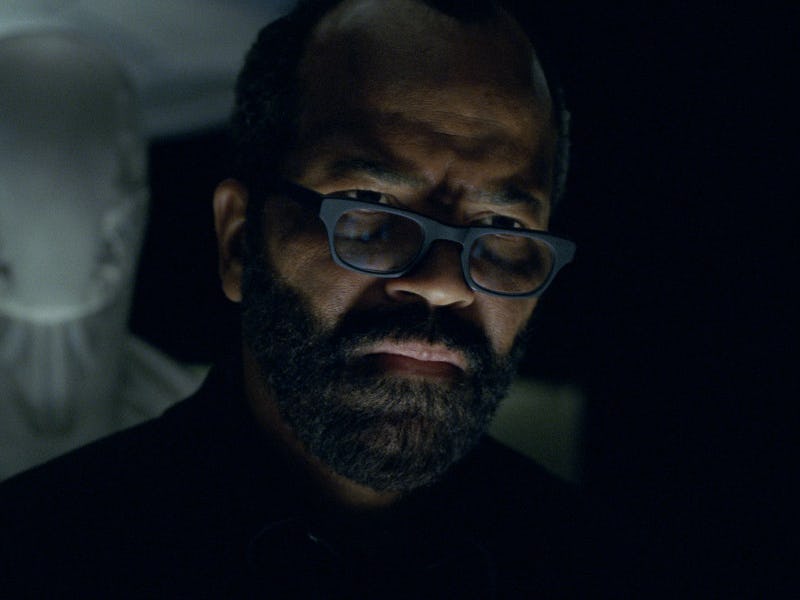If you’ve missed debating theories of consciousness and the moralistic negligence of big data, congratulations, the HBO series Westworld is back. The thrill of this science fiction thriller lies largely in the easter eggs it plops along the way, and episode one of Season 2 was no exception: By throwing out some scientific-sounding keywords, the series didn’t waste any time forcing viewers to speculate about what the hell is going on.
But first: spoilers for Westworld below. If you haven’t seen the series’ premier, this won’t look like anything to you.
Chaos has ensued in the park since Robert Ford released his new narrative and died in the Season 1 finale. In the new season, host Bernard Lowe and Delos executive director Charlotte Hale are n the run from the now-murderous hosts. Hiding in a secret bunker, Charlotte tells Bernard that Delos will only save them if she finds the defunct host Peter Abernathy, Dolores’ dad. Weighing his own chances of survival, Bernard offers to help, explaining that the hosts operate on a “host mesh network”. Hosts, it seems, can subconsciously communicate and share information with other hosts in close proximity, much like “ants in a colony.” By tapping into this network, Bernard suggests, they can find Abernathy. But the implications of his statement are much larger that that.
It hints that, like ants, hosts may behave as ‘super-organisms’ — a group of organisms that display a high level of organization meant to maintain the survival of the whole colony rather than the individual. If hosts are a collective super-organism, as Bernard suggests, then they’re not operating according to human survival instincts, which prioritize the individual. What matters to a super-organism is the survival of the whole.
Bernard and Charolette move through the park.
Actual mesh networks are used primarily to spread Wi-Fi. They operate as a series of nodes, or connection points, in which signals can jump from node to node and users can tap into the internet without relying on its major providers.
Mesh networks are not unlike a the hive mind of a social organism. An ant colony, for example, uses a combination of acoustic signaling and chemical integration to communicate, sharing information about where to move via pheromones. In a 2015 PLOS One study on ants as a super-organism, researchers from the University of Bristol explained that, when it comes to pheromones, “some species employ both ‘aggressive’ alarms, to draw nest mates towards potential intruders, and ‘panic’ alarms, to facilitate evasion or evacuation when faced with an insurmountable force.”
Ants have a structured workforce where each ant has a specialized task.
This form of mass communication reinforces the super-organism’s ability to organize collectively. By sharing information this way, a colony of ants can strike potential threats as a single unit.
“Ants react very differently, and in a coordinated fashion, to perceived predator attacks depending on their location,” Thomas O’Shea-Wheller, Ph.D., co-author of the PLOS One study, explained in a statement. “Just as we may respond to cell damage via pain, ant colonies respond to the loss of individuals via group awareness and reaction.”
With Westworld hosts across the park coordinating attacks against humans, it will be interesting to see what happens when they realize they can tap into the mesh network. As of now, they’re still operating wild west-style, riding by horseback to share news, but it may not take long for them to realize they can move in a “coordinated fashion,” like ants. Of course, whether they truly have free will remains to be seen and may mess up the host hive mind entirely. Individual ants don’t seem to have the ability to do so, and the only host that’s exhibited it so far is Maeve. Can a super-organism still operate if its individuals can make choices of their own? We’ll have to see as the season continues.
